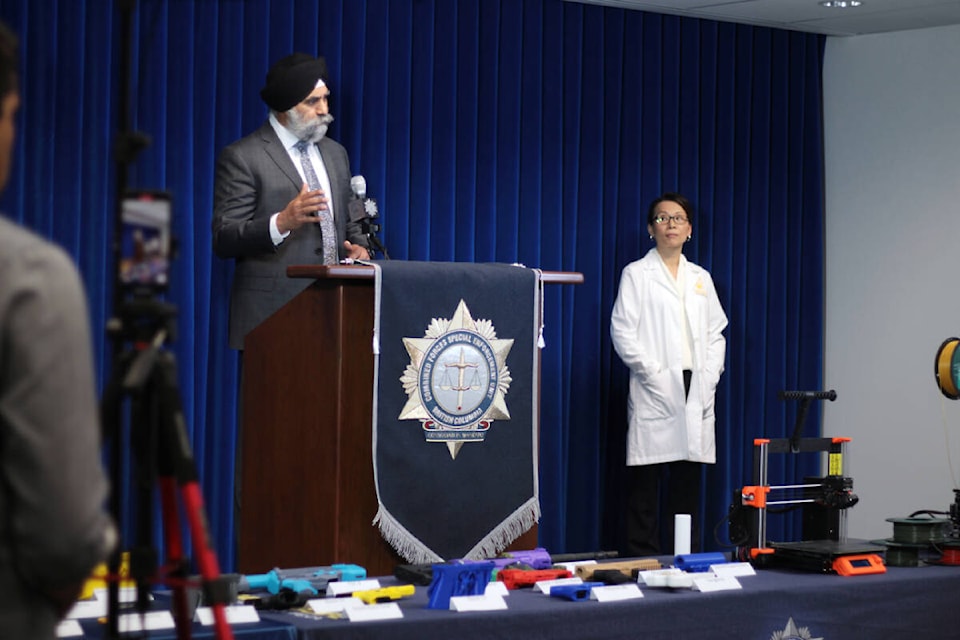If you can Google, you can get the schematics to create a 3D-printed firearm or weapon, says B.C.’s anti-gang police agency.
That was the message from the Combined Forces Special Enforcement Unit Tuesday (July 11) warning the public, parents and their children of the dangers of 3D printers.
“You can literally go on to the internet and Google 3D printing schematics and plans, and unless there’s oversight in visibility of what is being done, there is a risk that our children might be printing things that we wouldn’t want them to have,” explained Staff Sgt. Baltej Dhillon, program manager for CFSEU’s crime guns investigative and intelligence group.
“Because it’s so new and we’re still learning ourselves the risks and dangers to it, this is an extraordinary step that we’re taking to make sure our children don’t find themselves in a situation and parents don’t find themselves in a situation that they’re having to come to a police station and bring their child along. That make be a best-case scenario. The worst-case scenario is the child getting hurt.”
Police have dubbed them privately made firearms, but plans can also include 3D-printed “brass” knuckles, knives and grenades. CFSEU had several 3D-printed guns on display, along with a 3D printing in progress for the frame for a Glock 26.
“It really didn’t take our team long to figure out how to print from the online sources,” noted Daisy Wong, lab manager with CFSEU’s Provincial Forensic Firearms Lab.
Wong is part of a team that takes the seized items, assesses them and determines if they can readily be made into a firearm. If they can, then it’s likely a prosecutable offence.
What the team has found is that 50 per cent of them are “failed jobs,” which have flaws and can pose structural integrity issues, but the rest are operable as is.

A 3D printer can make about 80 per cent of a firearm and the remaining 20 per cent are all parts that are legal to purchase, such as barrels and trigger mechanisms.
Dhillon has had a decades-long career in policing, but he never expected to 3D-printed guns as a cause for concern.
“Privately made firearms are here to stay, but this technology is absolutely scary.”
Operations officer Insp. Joel Hussey said Tuesday’s warning wasn’t about “moving away from the huge benefit that 3D printing provides,” but instead being aware and mitigating the risks with what the technology can do.
“That is what is concerning to the public is that they’re being made to look like real guns – that is concerning. Also equally disturbing, as you see here, they’re made to look like toys, so they also pose that risk to public.”
READ MORE: 3D printed gun parts seized in raids in Aldergrove, Abbotsford
READ MORE: Police arrest 45, seize 440 weapons in Canada-wide ghost gun raids
He said in B.C. and Canada, there has yet to be a high number of these type of firearms, but law enforcement agencies are noticing a year-over-year rise in seizures and illegal use of the 3D-printed firearms. It’s becoming a global trend.
In Canada, the number of privately made firearms in 2021 was “just shy of 200,” but it rose to 500 the following year.
Comparatively, the Bureau of Alcohol, Tobacco, Firearms and Explosives in the U.S. seized about 8,500 in 2020. That number rose to 19,000 in 2021.
@laurenpcollins1
lauren.collins@blackpress.ca
Like us on Facebook and follow us on Twitter.

